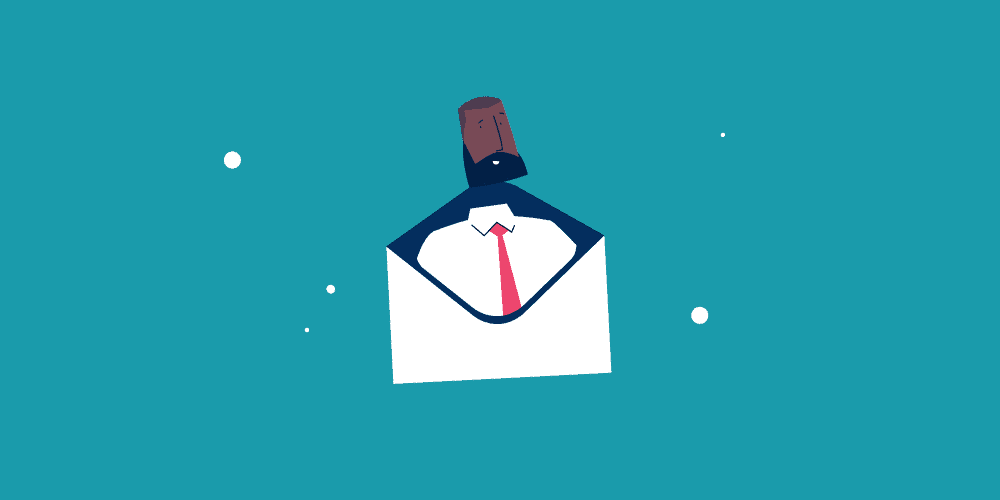Last updated 21st November 2023
“People buy from people.” It’s an old saying – but, even in today’s high-paced digital world, it often rings true. And in today’s busy, B2B world – the video sales letter is the quickest way to establish that personal relationship.
But what’s a video sales letter? How do they work? And how do you create one?
In this article, we’ll help you put together this potent blend of video, sales messaging, email, landing pages and more – to make sure that people don’t just buy ‘from people’ – they buy from you!
What is a video sales letter?
The first thing to understand is why the heck they’re called ‘video sales letters’ when – as we’ll go on to explore – they aren’t really letters at all.
Well, the roots of video sales letters lie in the world of direct mail – which, incredibly, once seemed new age and cutting edge.
Once upon a time, direct mail was this new, exciting alternative to knocking on doors. It represented an opportunity to sell to people, in quite a targeted way, without the presence of a salesperson. (It’ll never catch on, right?)
Sales letters, then, were essentially pieces of direct mail that were sent out to potential customers with the specific aim of persuading them to buy a particular product or service. They seem pretty archaic now but letters that might have been formatted like the templates below (images taken from Sample Letter World), would have once seemed like a supremely exciting way to drum up new business and reach potential customers.
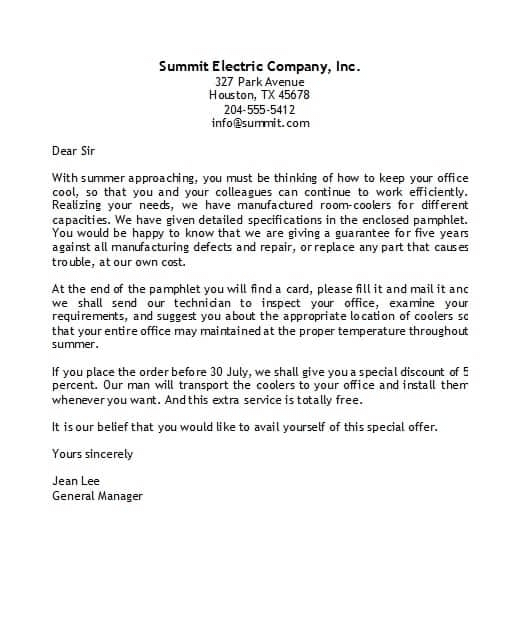
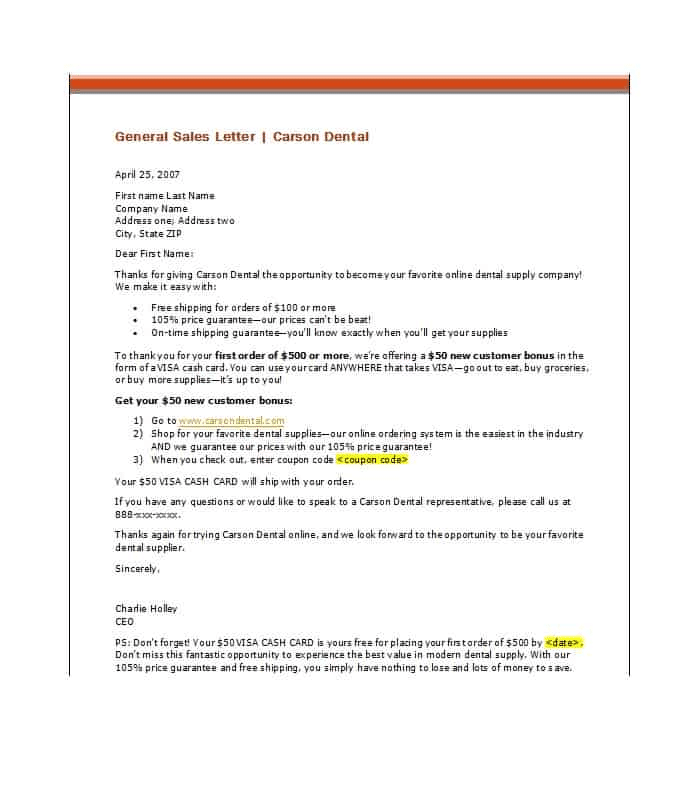
As you can see, they’re personalised; they jump right in with the ‘problem’ the reader is likely to be having. They agitate that problem and explain why it’s such a big deal. They introduce the product or service they offer, and explain a few of the reasons why they help overcome the initial problem. And they generally offer a call-to-action with an ‘offer’ – a discount or compelling reason to take action and get in touch.
Video sales letters are basically the same concept – but with all the benefits of video. Let’s be clear: this is a phenomenally flexible media type with all sorts of looks, feels and treatments.
But a video sales letter is generally any video where the main objective is to sell. Not educate, or entertain – although they may help with the ultimate objective – but to introduce and sell products and services. This means that in many cases, they do seem to cross over with explainer videos.
They’re also unique because they tend to be ‘focal’ pieces of content. Whereas explainer videos nestle among other content on home pages – representing a variety of different ways to consume information – VSLs generally live on stripped back sales ‘landing’ pages, often as the only item on the page, other than a buy button or a contact form.
Or, ‘direct mail’ style, they can also be sent out in emails, direct to your prospects, as part of your sales collateral. The idea is exactly the same here as with a sales letter:
- Reach your ideal customer
- Introduce yourself, your business, your product/service
- Inspire contact or action
Whether you’re driving targeted traffic to a landing page with an ad campaign, or sending an email directly to the inbox of your target customer, a video sales letter is the digital equivalent of a ‘knock-on-the-door’ sales pitch!
Creating your video sales letter…
So, let’s talk a little bit about how to create a video sales letter that works.
- Decide on a format
We’ve mentioned it already but there are a vast number of different treatments for video like this. If you’re working on a budget, want to keep things personal – or, indeed, personalise your content for every video – you’re going to want to use a simple filming setup, perhaps even using your smartphone.
Sometimes, ‘rough and ready’ is better…it develops a sense of authenticity that can be important in your first impression. Take these templates from ClickFunnel for example…
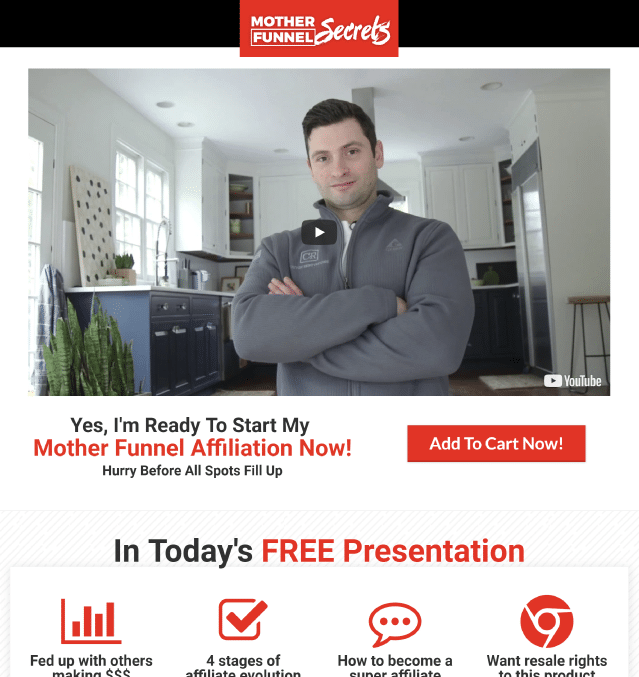
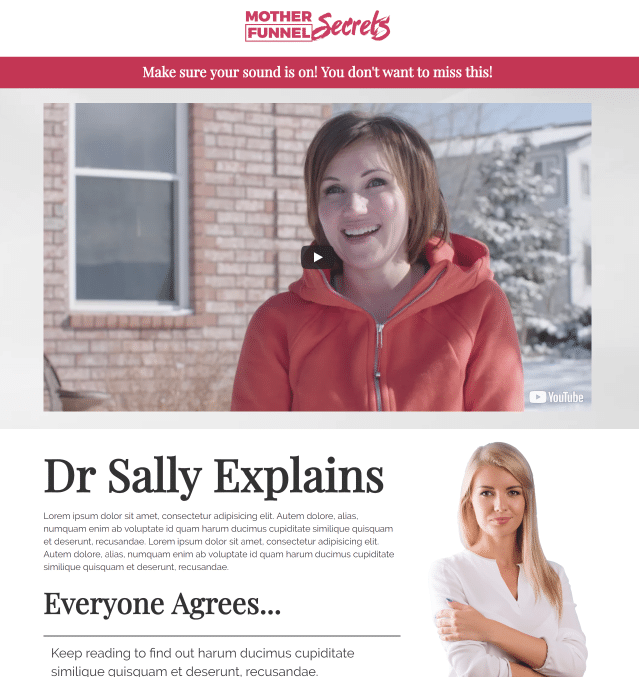
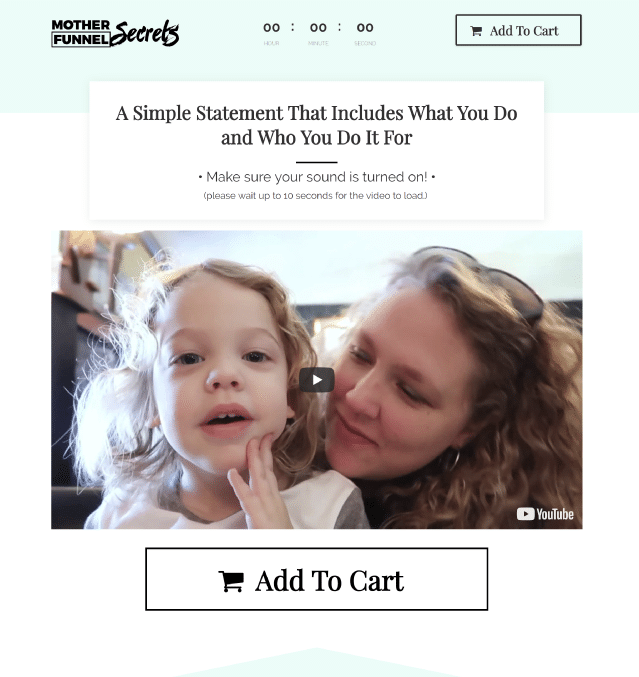
Or you might want to use a more sophisticated style like screen recording or animation. Our showreel below gives you an idea of some of the styles you might be able to draw inspiration from. If you’re delivering the same message time and time again, animation can be a very slick and visually impressive way to do it, ensuring you make an impact.
It’s really important to nail down style because this will inform the creative decisions you make further down the line – and any equipment you may need to buy.
Write a script
The first step creatively is to put pen to paper on a script. You could use a simple formula like our script document which lays out the voiceover – the dialogue you want to speak – on one side, and the action on screen on the other side. This is a text description of what, roughly, will be happening on the screen. It will give you an idea of what you need to film, illustrate or create when it comes to the actual production process. This is a great place to really dump your ideas and start to whittle them down. Don’t be afraid of the blank page – just get something down.
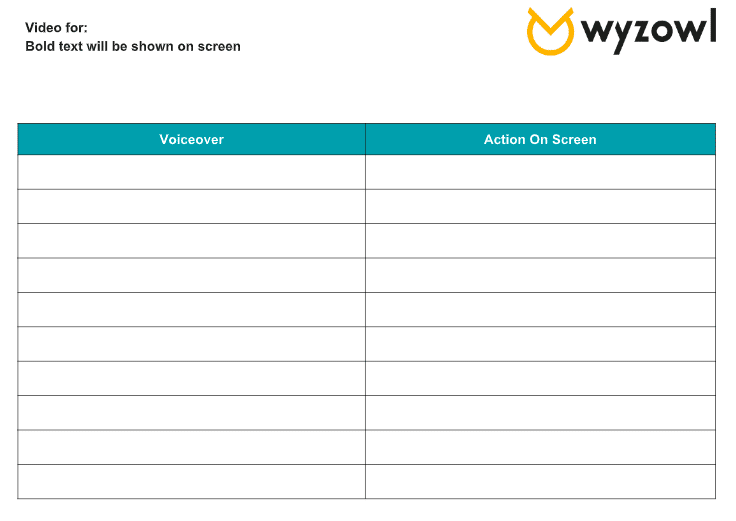
You really want to follow a formula for the ideal video sales letter, and it looks something like this:
Grab attention and empathy – you’re looking to start your video with a ‘bang’ – which means no long-winded greetings or time-wasting intro graphics. Get to the point. You want the viewer very quickly to know that this is content for them – and that you’re here to address one of their problems.
State the the problem(s) – often, people want to go straight in by talking about themselves, but it’s much better to lead with the problem the audience is facing. Again, empathy is key here. You want the viewer to recognise themselves in your statement of the problem – and agree that, yes, things would be much better if problem ‘A’ was solved.
Work the problem – what is the real effect of the problem? How is this manifesting itself? Massaging and manipulating the problem is about crystalising the issue and making clear the damage a problem is causing. So, the problem might be that a business is struggling with its inefficiency and communication – but what that really means is that the client experience is suffering, harming customer satisfaction, reducing referrals, increasing pressure on the team, limiting growth and success. It’s about tying back that specific problem to the base needs and goals your viewer has.
Introduce the solution – now it’s time to talk about your product or service, and what you do – keep it brief at this point. Just offer a quick introduction to who you are and move on – maybe a sentence or two.
Build credibility – this is often the first time people are hearing from you, so don’t just assume they’ll trust you. Talk about some of the companies/people you’ve worked with, how you’ve helped them, or call out some of the data that proves you can do what you’re offering.
List the benefits – be specific and call out the key benefits of working with you. You don’t want to overwhelm your viewer, or lose their interest, so keep it to 2-4 key benefits that you feel will resonate most strongly.
Create urgency to act – this is where it’s a good idea to offer ‘something’ in return for immediate (or at least prompt) action. You could offer a discount, a free piece of content such as an ebook or webinar, or some exclusive bonus that others don’t get, to make sure that anyone who’s interested has a clear incentive to act now, before they push the issue to the back of their mind again!
Tell them where to go next – regardless of whether your VSL lives on a landing page or within an email, the end of your video is like the end of a road. And, to make sure the journey is clear, your viewer needs a signpost – whether it’s a contact form on page, a number to call, or a website to visit. Be clear and give direction on where to go, and what to do.
| Make it unique? If you’re selling a high-value product or service, it sometimes pays to create a different video for each of your prospects. For example, if you were selling content marketing services – you might create a video analysis of a particular company’s website, showing where their strengths and weaknesses lie, and offering them a full consultation if they’re interested. |
Design the graphics or record the footage
If you’re looking to create ‘rough and ready’ to camera videos, you can do this quickly and easily using a tool like Wistia Soapbox.
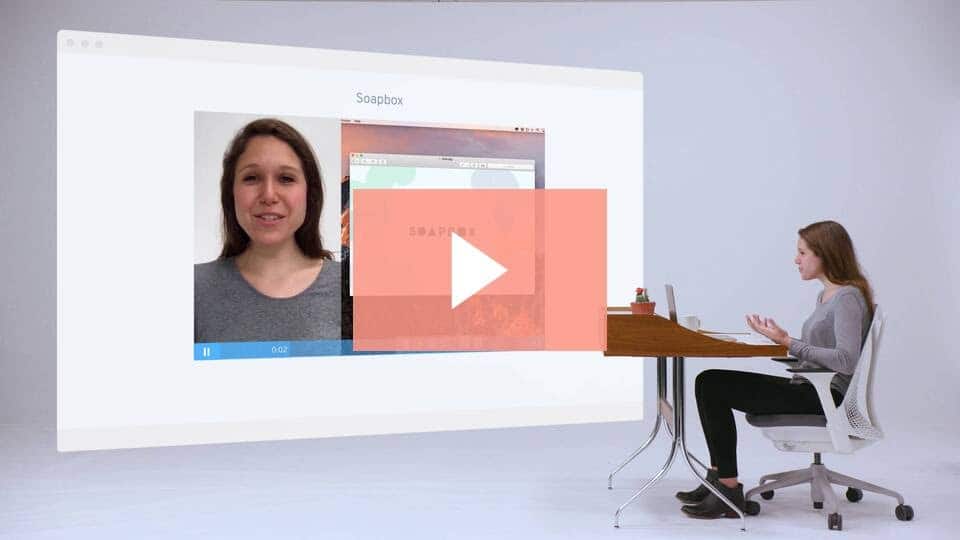
Soapbox – A Free Webcam and Screen Recorder for Chrome
This is cool because it records both your webcam and your screen – and lets you flip to display either, or both, as required throughout the course of your video.
Creating an animated video is obviously a more involved process. We do this using industry design and animation software such as Adobe Creative Cloud, firstly by creating all graphics for the video and laying them out in a Google Slides presentation to click through and check…
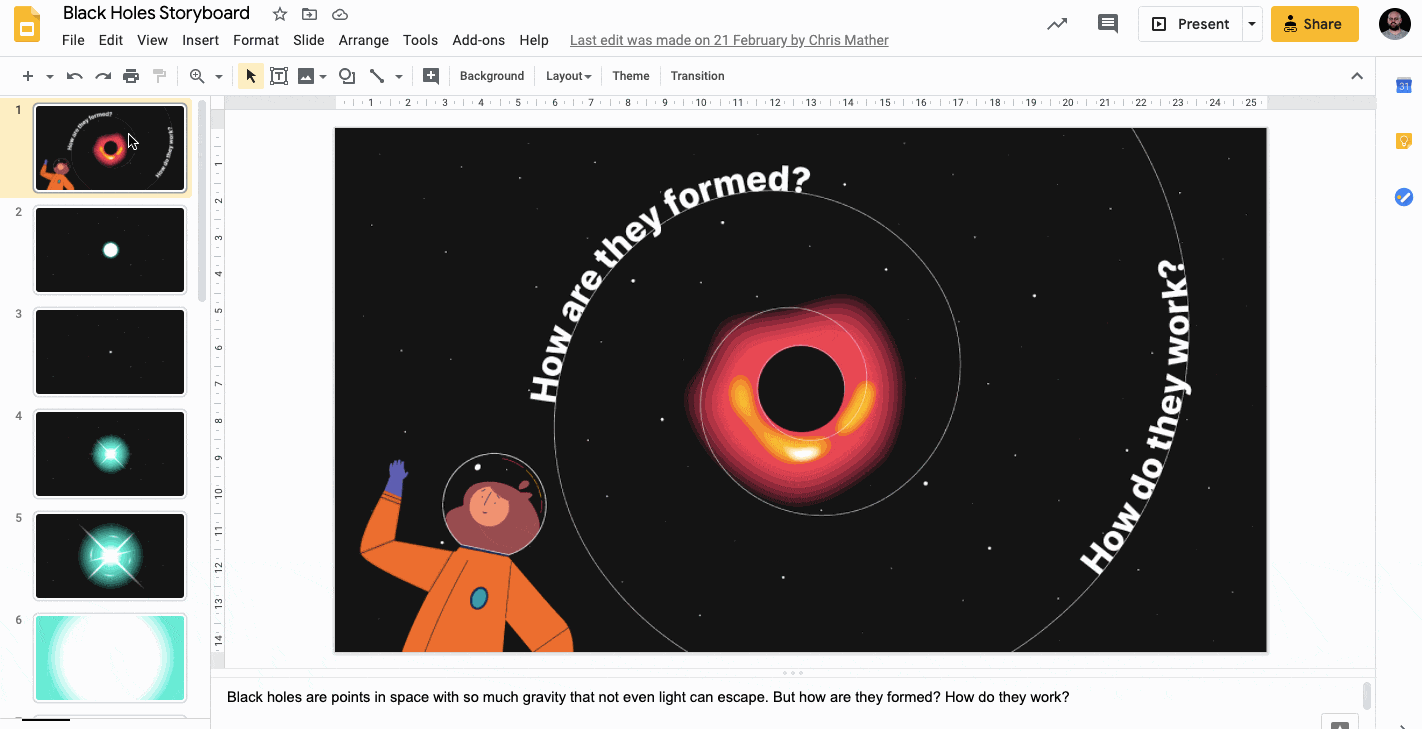
…before subsequently adding motion, sound and polish using Adobe After Effects and Premiere…

If you’re looking for stock video or audio to give your video a bit more punch, check out these articles…
- 20 Best Free Stock Video and Stock Footage Sites (2020)
- The 20 Best Royalty Free Music Sites in 2020
Share and promote
Once your video’s complete, it’s time to get it out there.
Landing page
Consider creating a simple, stripped back landing page – focused around your video – with minimal copy that absolutely hammers home the value of what you’re offering.
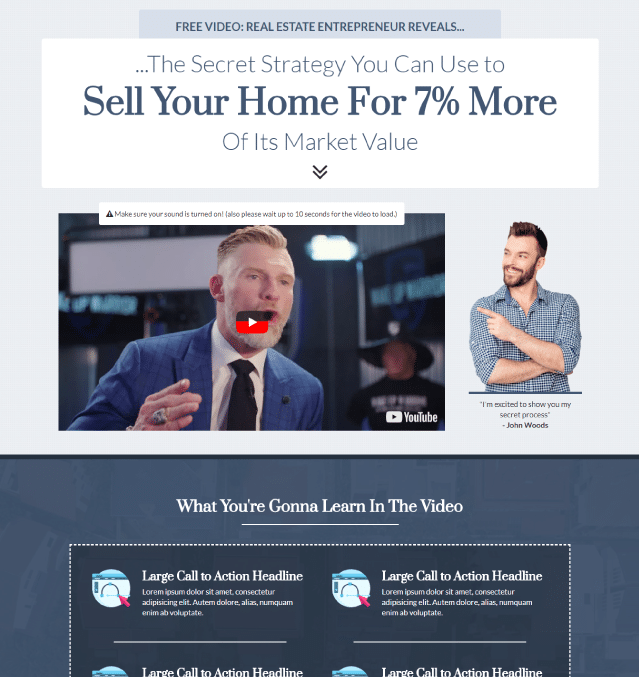
Again, your approach will vary depending on audience, price point and other variables, but don’t feel that you have to push people towards buying right here and now. In these examples, the funnel is very much about pushing people towards a piece of content that will help and educate them, ultimately offering services and help along the way.
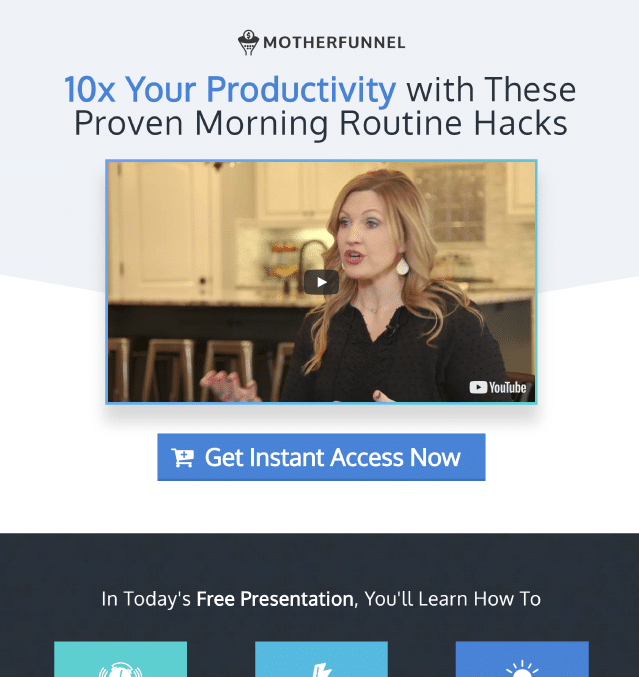
Back in the sales letter days, you might have used the Yellow Pages to find people to send your letters to. These days, you want to use tools like Hunter.io to find email addresses to get your VSL in front of the right people.
Remember, targeting is important – make sure you send the video to the right people and remember that you can always tailor your messaging depending on the audience, making sure you send the right content.
Top tips for creating an inspirational video sales letter
Based on creating over 3,000 videos for our clients around the world, we’d mention the following pointers as our ‘top tips’ for a great VSL:
- Attention spans are limited – particularly among busy purchase-decision makers. So remember, less is more – keep it short and to the point. Think of your VSL as an ‘elevator pitch’ – you have from ground floor to the top and not a second longer, so what’s really important to say, and what can actually wait?
- Make the first 30 seconds count – the whole point of a VSL is to stop your audience getting distracted reading swathes of text. So don’t waffle, get right into it, don’t ‘build up’ to your value like a Hollywood movie! Get it in up front.
- Promote promote promote! Video is a high-value piece of content and the real value is in how versatile it is. You can often get dozens of uses out of one great piece of content so use it on social, email, website, landing pages, everywhere you can.
- Don’t forget to think about other ways to use video in your sales process – answering questions, overcoming objections, providing info and building confidence at every stage. This content can pay for itself many times over.

